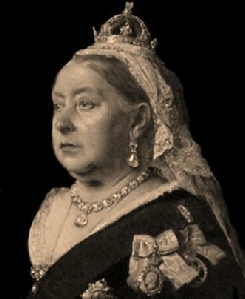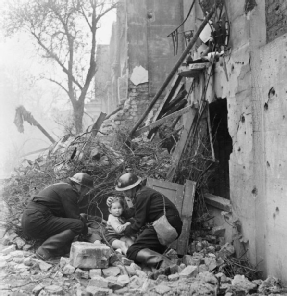
The Early Days
In 1897, when residents began moving their goods and chattels into the newly-
Early photographs of The Drive show it very much as it is today, except that a higher, more substantial wall surrounding it.

In the early 1900s, waiting across the road for a No. 14 horse-
When the air raid warning sounded, people would decamp with sleeping bags to tube stations, or various public shelters dotted around the area, which had space for over 8000 souls. Residents would always keep a full bath of water in case of fire from incendiary bombs. Today, as you make our way to Putney Bridge Station, with whatever it is you have on your minds, you walk the same footsteps as those unsure whether their flats would still be standing on their return. When war ended, a party was held in The Drive, along with all the other street parties; trestle tables erected, bunting hung up, sandwiches cut, cakes baked. One resident, high on celebration, attempting to slide down the banisters, fell through all the way to basement and, having survived the war, was killed on impact.
Since the war things have been rather less eventful and dramatic. When the tennis courts became neglected and fell into disrepair during the mid-
There are those still living in the Drive who remember these things, some for over sixty years. The bench in the garden is dedicated to the memory of Irene Wells who, herself, was able to hand on her experiences, during and long after the war. The shopping parade across the road has provided a bustle of various traditional local shops. At one time there were two butcher shops, two newsagents, a greengrocer, a fruit shop, hardware shop, a stationer, a florist, a fishmonger, a restaurant and a chemist, but with the changing complexion of the urban high streets, the variety has been somewhat reduced and the shops frequently change.
Listed Landmark
In 1985, the ‘Fulham Parish’ milepost attached to our street wall, announcing ‘London 3 1/2, Richmond 4 ½’, was declared a listed landmark. As such, it should not be changed or defaced in any way. Although previously yellow, and unknown hand recently painted it Black with White lettering. We do not know which was the original colour.

Wardens ‘rescue’ a young boy from the rubble and debris next to a bomb-
UA-
Life must have been fairly grand in its early days, servants’ quarters occupying
Coal fires were quite common up until the late 70s. People could collect their coal from cellars in the basement and use the service lift to all floors. It was not unusual to pass people on the stairs, coal scuttle in hand, on a cold winter morning.
Drive Mansions during World War 11
Fulham suffered its fair share of the London bombing during the second world war. In October, 1940, an incendiary bomb landed on Block 7 of Drive Mansions and everybody had to be evacuated to the other end of the building for the night. It burned, but did not explode and was eventually made safe at around three o’clock in the morning. The landing where it fell still bears scorch marks. A number of shops across the road were destroyed, as bombs fell all around in Landridge Road, Burlington Road, the High Street and Fulham Park Gardens.
A heavy gun was stationed at Hurlingham. A few residents still remember the frightening noise it made. It brought down an enemy aircraft one night, creating much damage to property, including a huge crater at the King’s Head roundabout. A map of the area was found in the wreckage with red dots marking targets such as power stations and railway lines. (Doris Wilkinson who died in 2015 at 100 year old) recalls that all the windows in the front of the building were broken by the blast.